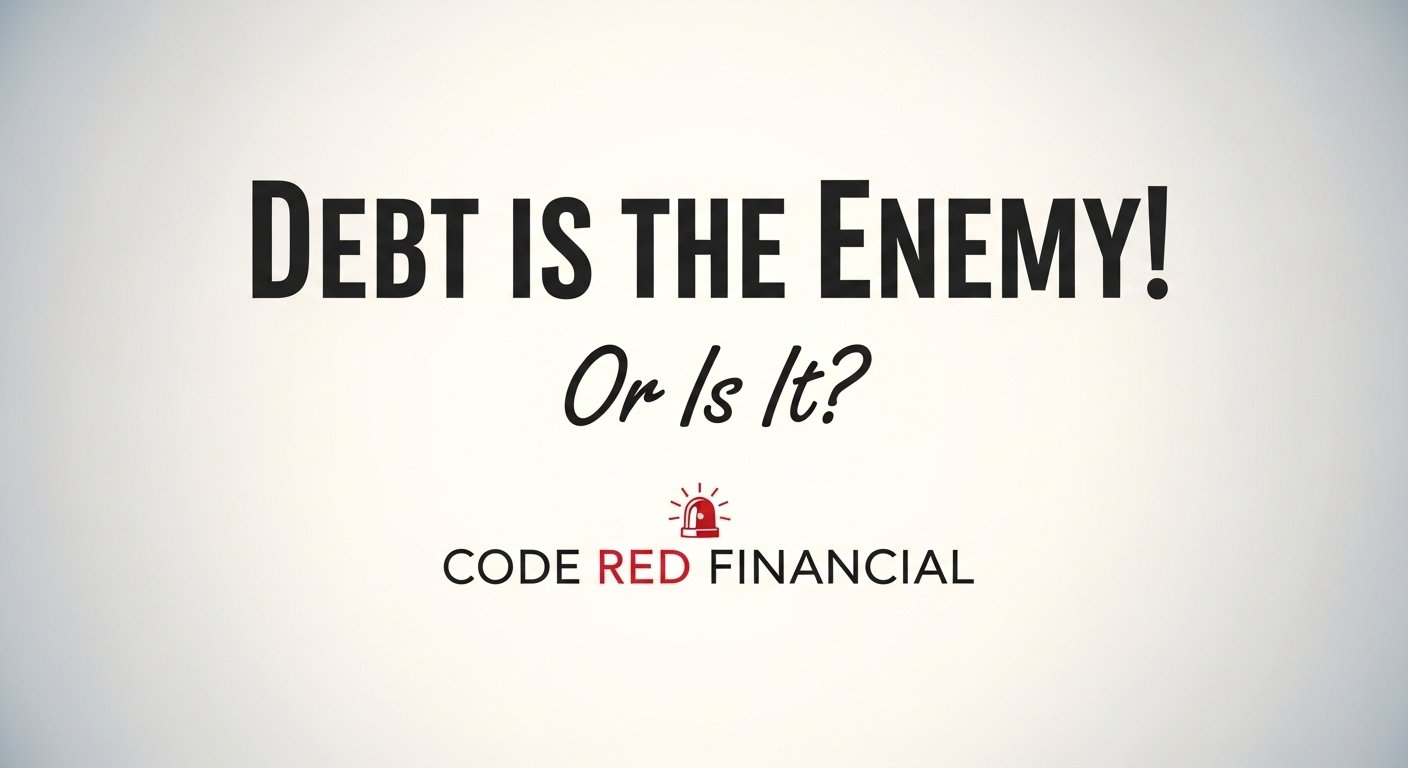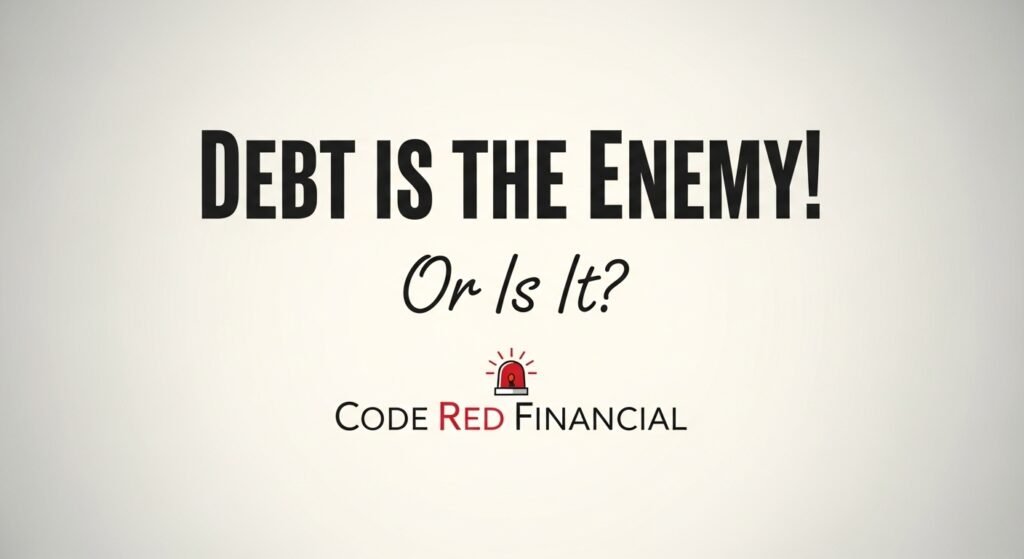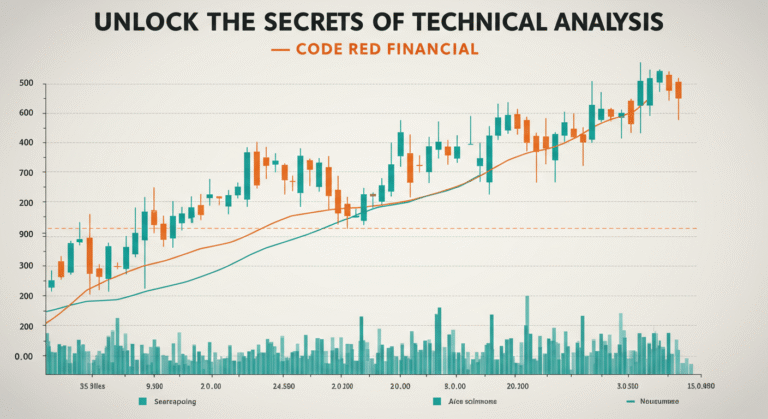
“Code Red! Code Red! Debt is the enemy!”
For many people, that internal alarm sounds automatically any time the conversation turns to borrowing money. This deep-seated fear is completely understandable. We’ve all been exposed to the cautionary tales: the crippling credit card balances, the predatory loan sharking, the financial ruins caused by reckless leverage. The prevailing wisdom taught to us is simple: all debt is bad debt, and the surest path to financial health is paved with avoidance.
But what if I told you that, for the financially savvy, debt isn’t a weapon used against you—it’s a powerful tool you can use to build wealth? Now, I have previously talked about this, but not in great detail, so I figured it was time to really provide a little more substance on the topic of strategic debt.
The truth is, nearly every successful business and most self-made millionaires on Earth use debt strategically. They don’t fear borrowing; they embrace it with calculated precision. Debt, when wielded with a plan, is one of the most powerful catalysts for wealth creation and achieving significant financial milestones far faster than saving alone could ever allow.
At Code Red Financial, we believe in facing financial challenges head-on and moving past fear to achieve power. So, let’s ditch the blanket condemnation of credit, redefine our relationship with borrowing, and learn the Code Red secrets to knowing when debt becomes a strategic asset.
Defining the Debt Dichotomy: Good vs. Bad Debt
Debt isn’t a moral issue; it’s a cash flow issue. The difference between debt that shackles you and debt that liberates you comes down entirely to what that borrowed money is used for and whether it creates future value.
The Code Red Debt (Bad Debt) 🚨
This is the debt that generates zero income and is used to purchase assets that depreciate rapidly. It only costs you money and decreases your net worth. It’s what we call ‘Code Red’ because it requires immediate, high-priority action to eliminate.
- High-Interest Consumer Debt: The most dangerous form. This includes revolving credit card balances, payday loans, or high-interest store credit for things like clothing, electronics, or impulse purchases. The item is worth less the minute you buy it, and the high interest rate (often 20% or more) makes the item dramatically more expensive over time.
- Depreciating Liabilities: Financing luxury cars, expensive boats, or high-end gadgets that lose value faster than you can pay off the loan principal. You are paying interest to own something that is rapidly shrinking in value.
Strategic Debt (Good Debt) ✅
This is debt that has the potential to appreciate in value or, critically, generate income that exceeds the cost of borrowing. This debt pays for itself and builds equity or increases your income stream.
- Real Estate Mortgages: Borrowing to buy an asset that typically appreciates and provides shelter.
- Business Loans: Borrowing to purchase equipment or inventory that boosts revenue.
- Education Loans: Borrowing to acquire high-value skills that significantly increase your lifetime earning potential.
The guiding principle is simple: Good debt acquires assets; bad debt acquires liabilities.
Scenario 1: The Cornerstone of Wealth – Real Estate Leverage
When people talk about leveraging debt for real estate, they are describing the financial engine of wealth creation. Mortgages are the prime example of strategic borrowing because they allow you to control a valuable asset with minimal upfront capital.
The Power of Financial Leverage
Imagine you want to buy an investment property worth $300,000. If you had to save every dollar, it might take a decade. With leverage, you only need a 20% down payment, or $60,000.
- You used $60,000 of your money to control a $300,000 asset.
- If the property appreciates by a conservative 4% in one year, its value increases by $12,000.
- Your return is calculated on the full $300,000 value, not just your initial $60,000 investment. That’s a 20% return ($12,000/$60,000) on your cash, minus the interest and costs.
In this case, the mortgage (the debt) is the powerful tool that gave your money a sling-shot effect, making your cash work harder and faster than it ever could in a savings account.
Cash-Flowing Properties
The most strategic use of a mortgage is for an investment property where the rental income exceeds the total monthly expense (principal, interest, property taxes, insurance, and estimated maintenance). The tenant is effectively paying off your loan, allowing you to build equity for free while collecting passive cash flow. Your debt is actively generating income for you.

Scenario 2: Investing in Yourself – Human Capital
Borrowing money to get a better-paying job or launch a high-growth career is a classic example of using debt to invest in your human capital—your single greatest income-generating asset.
The ROI on Student Loans
A student loan is “good debt” only if you treat it like a serious business investment. The cost of the debt (tuition + interest) must be less than the expected increase in your lifetime earnings. This is where you measure the Return on Investment (ROI) on student loans.
- Strategic Borrowing: Taking out loans for an accredited degree in a high-demand field like engineering, computer science, healthcare, or skilled trades. These paths typically offer a clear and reliable return that makes the debt manageable within a few years of graduation.
- The Critical Measurement: A good financial rule is that your total student loan debt should not exceed the expected salary of your first year on the job. If the debt-to-income ratio is too high, the loan becomes crippling and shifts rapidly into the “Code Red” category.
Debt used to acquire specialized knowledge or career certifications that directly lead to a significant boost in income is a smart trade. You are leveraging a few years of payments for a lifetime of higher earning potential.
Scenario 3: Business & Entrepreneurship
If you want proof that debt isn’t the enemy, look at the corporate world. Nearly every successful business, from start-ups to Fortune 500 companies, uses strategic business loans to grow. It’s an essential part of a healthy financial structure.
Fueling Growth with Calculated Debt
A business owner often takes on debt not because they need the money to survive, but because they have a high-confidence plan to scale.
- Capital Expenditures (CapEx): A logistics company takes out a loan to buy two new delivery trucks. Those trucks allow the business to take on two new large clients, generating an extra $10,000 in monthly revenue. This revenue easily covers the loan payment, and the business has significantly expanded its asset base and profit margin.
- Inventory & Working Capital: A retailer takes out a short-term loan to purchase inventory in bulk at a 40% discount, knowing they can sell it quickly at full price. The profit from the inventory sale covers the loan and leaves a substantial gain.
The logic remains the same: the Return on Investment (ROI) from the debt-funded project must be significantly higher than the Cost of Debt (the interest rate). Debt, in this context, is simply a financial amplifier.
The Code Red Framework for Smart Borrowing
Before you take on any kind of borrowing—even the “good” kind—run it through this Code Red checklist for effective borrowing:
- Low Interest Rate is King: The lower the interest rate, the wider the gap between your borrowing cost and your potential profit or appreciation. Always shop for the absolute best rate you can secure.
- Is it Tax-Advantaged? Does the government subsidize your debt? Mortgage interest and most legitimate business loan interest payments are tax-deductible, effectively lowering the overall cost of borrowing.
- Positive Cash Flow or Appreciation: Will the asset increase in value over time (real estate) or will it generate enough income to pay off the debt and then some (business loan, high-ROI education)? If the answer is no, it’s Code Red.
The Real Danger: When Good Debt Turns Bad
Even the best-intentioned debt can become dangerous if mismanaged. Strategic borrowing requires vigilance.
- Over-Leveraging: Taking on too much debt, even for a “good” asset, can sink you if market conditions change. If you commit to high payments and then face a job loss or a downturn in the rental market, that good debt can quickly trigger a financial crisis. Always maintain a conservative debt-to-income ratio.
- Liquidity vs. Debt: Don’t obsessively liquidate your cash savings (like your emergency fund) to avoid a low-interest mortgage or student loan. Maintaining liquidity (access to cash) for emergencies is often more important than paying down low-interest debt a year early. You can’t borrow money easily when a crisis hits, but you can always make a low mortgage payment.
Debt is not a moral failure; it is a complex financial instrument. The difference between those who fail financially and those who thrive is simple: The financially weak fear debt and run from it. The financially strong understand it, respect it, and use it with calculated precision to multiply their wealth.
Stop fearing the debt monster. Start learning how to ride it to financial freedom.
Disclaimer: This article is for informational purposes only and does not constitute financial or investment advice. Consult with a qualified 1 financial advisor or tax professional before making any decisions about your investments or retirement accounts







